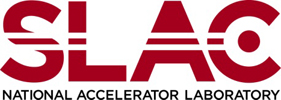
SLAC National Accelerator Laboratory
Coordinator: Todd MartinezReview abstracts for current and past practicum experiences at SLAC >>
SLAC National Accelerator Laboratory is one of 10 Department of Energy (DOE) Office of Science laboratories and is operated by Stanford University on behalf of the DOE. Since its opening in 1962, SLAC has been helping create the future. We built the world's longest particle accelerator, discovered some of the fundamental building blocks of matter and created the first website in North America.
SLAC’s revolutionary accelerator-based X-ray laser provides world-leading capabilities for understanding molecular structures and processes in many fields including biology, chemistry and materials science. SLAC also performs research on new accelerator technologies. Building on its origins as a particle physics laboratory, SLAC pursues a vigorous program of research in photon science, particle physics, astrophysics and cosmology.
SLAC's experimental science is complemented by world-class theoretical science. Simulation and modeling are vital everywhere, producing a strong and increasingly intercommunicating simulation community. Its Computer Division provides the laboratory scientists with the most efficient and modern services in high performance computing.
SLAC's excellent research facilities attract thousands of scientists from all over the world each year. Along with our own staff scientists, they're working to discover new drugs for healing, new materials for electronics and new ways to produce clean energy.
Six scientists have been awarded Nobel prizes for work done at SLAC, and more than 1,000 scientific papers are published each year based on research at the lab.
Computational Facilities
A doctoral practicum at SLAC in computational science involves exposure to not just the computational aspects of the science, but to the whole process of science. SLAC takes advantage of its relatively small size and relatively focused science to dissolve interdisciplinary boundaries. The many commonalities in computational science in areas ranging from Astrophysics to Ultrafast Chemistry are increasingly exploited to make SLAC an exciting and personally productive environment.
Each computational science activity at SLAC has access to shared lab facilities and often to its own dedicated facilities as well. In addition, most activities make use of DOE facilities at Lawrence Berkeley National Laboratory and National Energy Research Scientific Computing Center (NERSC), Argonne National Laboratory (ANL) or Oak Ridge National Laboratory (ORNL) for large-scale computations.
SLAC has a shared cluster of around 10,000 cores. Historically this cluster has been optimized for throughput-oriented data processing for experimental high energy physics, but new acquisitions will include infiniband interconnects. Astrophysics and Cosmology, Accelerator Modeling and the PULSE, SUNCAT and SIMES institutes, which are jointly operated with Stanford University, have dedicated clusters totaling around 7,000 cores, complemented by several hundred GPUs. Astrophysics and Cosmology also have a donated Cray XT3 housed on the Stanford Campus.
SLAC Practicum Benefits
SLAC's vibrant scientific environment encourages an integrated approach to science. The depth and scope of the "photon science" accessible at the LCLS (Linear Coherent Light Source) and SLAC's involvement with LSST (Large Synoptic Survey Telescope) are just two examples of its rich scientific surroundings. SLAC scientists also pursue other areas of research in accelerator science, biology, environmental science, scientific computing and the materials, chemistry and energy sciences. This rich environment has drawn in to the SLAC and Stanford faculties some of the world's best experimental, computational and theoretical scientists and provides exciting opportunities and experiences for students pursuing a doctoral degree in science and engineering.
SLAC Programs and Facilities Relevant to DOE CSGF Practicum Research
Current Computational Science
- Astrophysics and Cosmology (Tom Abel, Risa Wechsler): Modeling stars and galaxies in the early universe. How did structure form in the universe? How do galaxies form and how can they be used to understand the nature of dark matter and dark energy? The major scientific focus is on new computational algorithms.
- Particle Physics (Makoto Asai, Richard Mount, Charlie Young, Su Dong): Ongoing development of the Geant4 toolkit for the simulation of particle interactions with complex devices.
- SLAC is a collaborator on the Atlas and LHC experiments at Cern studying the fundamental constituents of matter. It is one of a few dozen ATLAS Tier 2 computing centers around the world, and one of only five in the United States, helping distribute and interpret the terabytes of data from the LHC's proton-proton collisions.
- Accelerator Modeling - Beam Physics (Yunhai Cai): Modeling of particle transport and radiation in accelerating cavities.
- Accelerator Modeling - Electromagnetic Fields (Cho Ng, Kwok Ko): ACE3P code models all aspects of electromagnetic fields including wakefields, transients, multipacting, dark currents and thermal and mechanical effects. Techniques include nonlinear eigensolvers, adaptive mesh refinement and parallel visualization.
- PULSE - Theory and Simulation of Ultrafast Chemistry (Todd Martinez): Developing theory and simulation techniques to complement the femtosecond-scale time resolution of SLAC's Linac Coherent Light Source.
- SUNCAT (SUstainable eNergy through CATalysis) (Jens Norskov): Computational screening of potential catalysts. SUNCAT specializes in atomic-level quantum chemistry calculations for computational screening of potential catalysts using Density Functional Theory (DFT) codes.
- SIMES (Stanford Institute for Materials and Energy Sciences) (Tom Devereaux): Perform materials-specific comparative simulations to reveal underlying physics, using a variety of computational methods including non-equilibrium Keldysh techniques, quantum Monte Carlo, exact diagonalization and sparse matrix techniques.


